Up Next

Formula 1 fans went to Spa or turned on their televisions to watch a race, and they didn’t get one, with the Belgian Grand Prix not worthy of the name. But while the difficulties in running modern grand prix cars in the wet are well known, it’s fair to ask if there are ways to make them more possible to drive in such conditions.
In reality, there are two separate problems. The first is one visibility, because if the drivers can’t see anything in the spray then clearly that is something that needs to be improved. The second has to do with the cars themselves.
In terms of the visibility, F1 is an open-wheeled formula and as such some of the spray – but not all – is generated by the wheels. As the tyres rotate, they pump the water out from the contact patch at, according to Pirelli, 85 litres per second at 300km/h. Reducing this to reduce the spray would simply lead to more aquaplaning and putting mudguards over the tyres to contain this would do very little to change this.
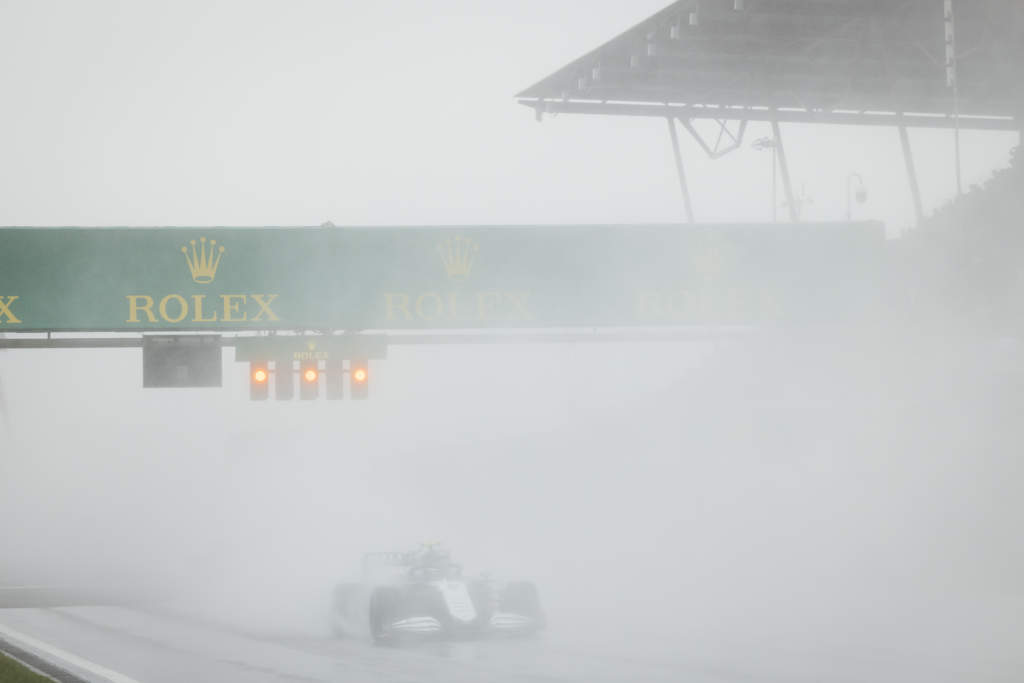
The complete car is designed to generate downforce by modifying the airflow, generating vortices. In doing so, it will leave a turbulent wake behind it. Many commentators will say that an F1 car is the best vacuum cleaner around because it lifts the water high into the air, especially when the water is deep enough.
The 2022 cars should have an effect on this because the body has less vortex-generating gizmos. But I wouldn’t expect it to be a big percentage reduction because, after all, it is still an open-wheeled formula generating downforce.
If you go to the other end of the scale and try driving down a motorway in the wet with your wipers switched off, which I would not advise, you would see what I mean. Turbulent airflow combined with water, which is heavy and wanting to drop out of that airflow, will always cause a mist that is difficult to see through.
As for the aquaplaning, in my book this is the most dangerous situation. The tyres – both intermediates and wets – cope with a certain level of water. While the figure for the wets at 300km/h is 85 litres, for the intermediates it’s 30 litres in terms of the water being cleared by the tyre. But when that’s not clearing enough to cut through the water, then it’s simply like driving on ice.
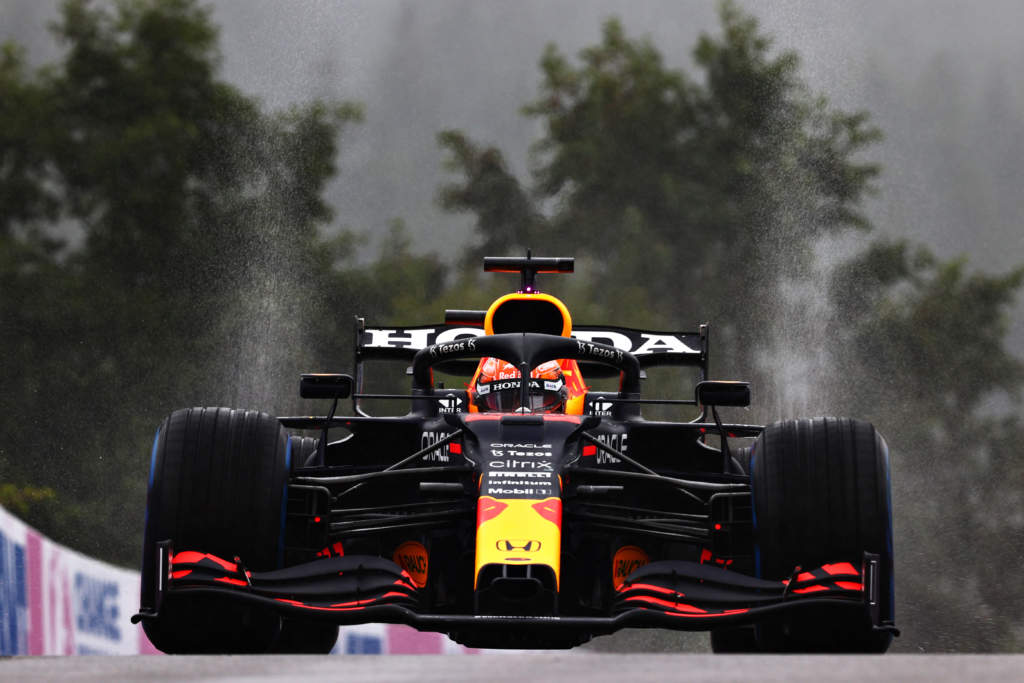
I’m sure we’ve all experienced this at some time when driving down the motorway. It gets your attention very quickly as you become a passenger.
We have had many very wet races in the past and we have had incidents and accidents in them. It’s not the tyres themselves that are the problem, it’s what is called the land-to-sea ratio. Obviously, for the slick this is 100% land, the inters I think are 75% land and the wets 60% land. This could be altered, but once again it will bring other problems like the tread moving and wearing very quickly when it starts to dry, but that problem would be the same for all so not insurmountable.
The other one is when the bottom of the car itself rides on the water. The intermediate and wet tyres have a slightly larger diameter than the slicks, so the cars’ ride heights are automatically raised when they are fitted.
It’s the degree of increase that is critical. When this difference in diameter was introduced, the teams wanted very little and the organisers wanted it to be more to try to reduce the problem we had yesterday. Perhaps now F1 is changing to 18-inch wheels, it’s time to review that diameter increase – would another 5mm on the diameter of the wet relative to the slick be such a problem?
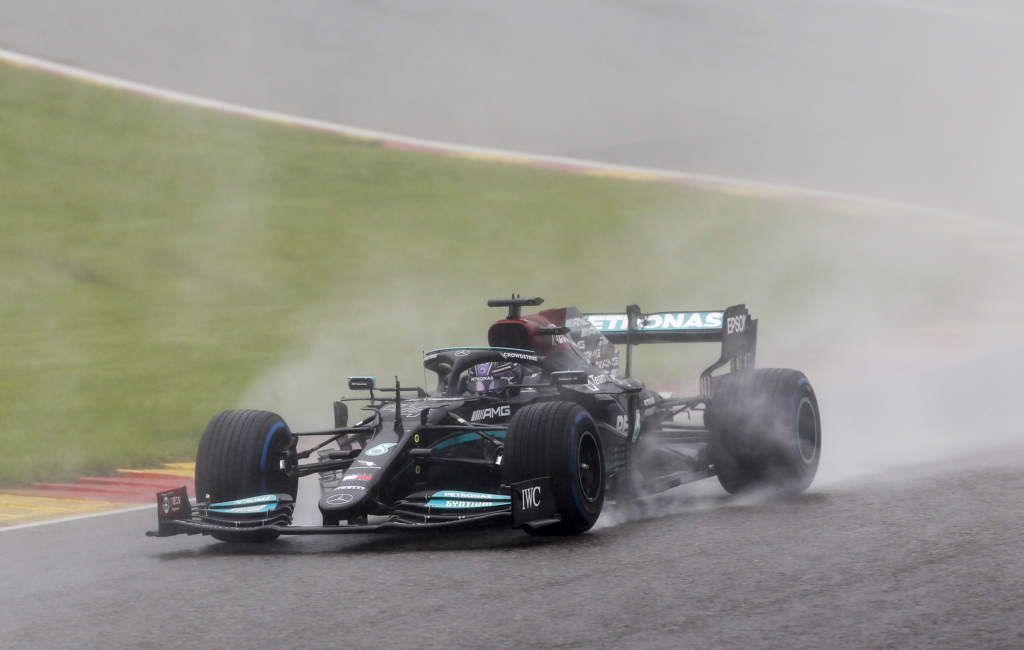
These cars, and even more so the new ones for 2022, generate a fair percentage of their downforce from the underfloor. This is done by the low pressure under the car working between the track surface and the undersurface of the car. This sucks the car down towards the track surface.
After doing so much research into the aerodynamic characteristics of the cars to create the 2022 regulations, the next challenge should be to investigate ways to make the cars more driveable in wet conditions.
A film of water on the track surface reduces the gap and as the cars run much lower on the front than the rear, it affects that end of the car much sooner. If you look at Norris’s accident in Spa, you can see the car just started to oversteer in the compression coming out of Eau Rouge. This was because the front increased in grip, not because the rear lost grip. After that, he was a passenger.
At the moment, the lowest point of the car is the plank area. It’s 30cm wide and runs from the rear of the front tyre to the front of the rear tyre, so that means a large surface area. This photo (below) of Marcus Ericsson crashing at Monza in 2018 shows the plank very clearly.
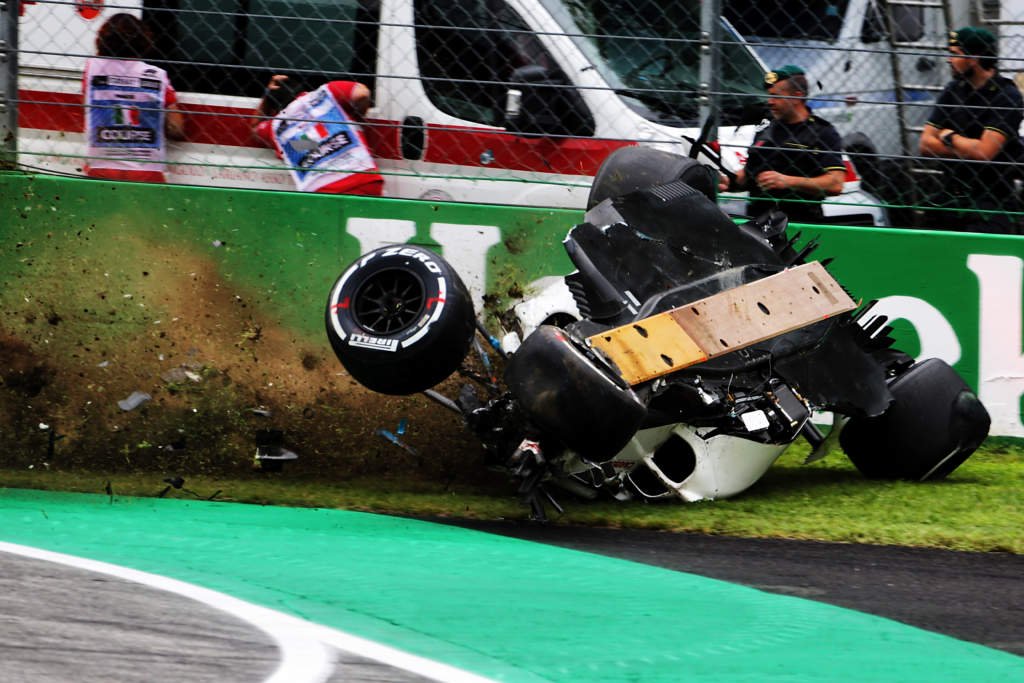
Outside of the plank, the underfloor of the car rises up by 1cm until 50cm of overall width and then rises again by 5cm to the maximum width of the car.
If I was doing some research to try to eliminate the potential for the underfloor to aquaplane on this surface water, I would be looking at raising that centre section where the plank fits.

With the new rules for 2022 making it more more of a ground-effect car, this problem could very easily be increased. If the centre section of the car was raised and there were mandatory side skirts that had to be, say, 5cm down and a maximum of 5cm wide from the widest part of the car then that would simply leave more room under the car to allow for standing water.
Designers will always come up with the fastest solution and that’s why these cars just can’t follow each other closely. The same problem is a factor in running in the wet, it’s all about the turbulence.
It would do nothing for the tyre aquaplaning problems, but at least it would start to address this problem of sudden lack of grip leaving the driver a passenger.
I am hopeful that the 2022 regulations will improve this situation slightly, but it will not be enough to eliminate the problems we saw yesterday.
In reality, it is impossible to run in conditions like we had yesterday without more risk to the drivers, marshals and spectators. So it’s all about evaluating what the acceptable level or risk is and judging at what point the conditions move from drivable to the drivers just being a passenger.
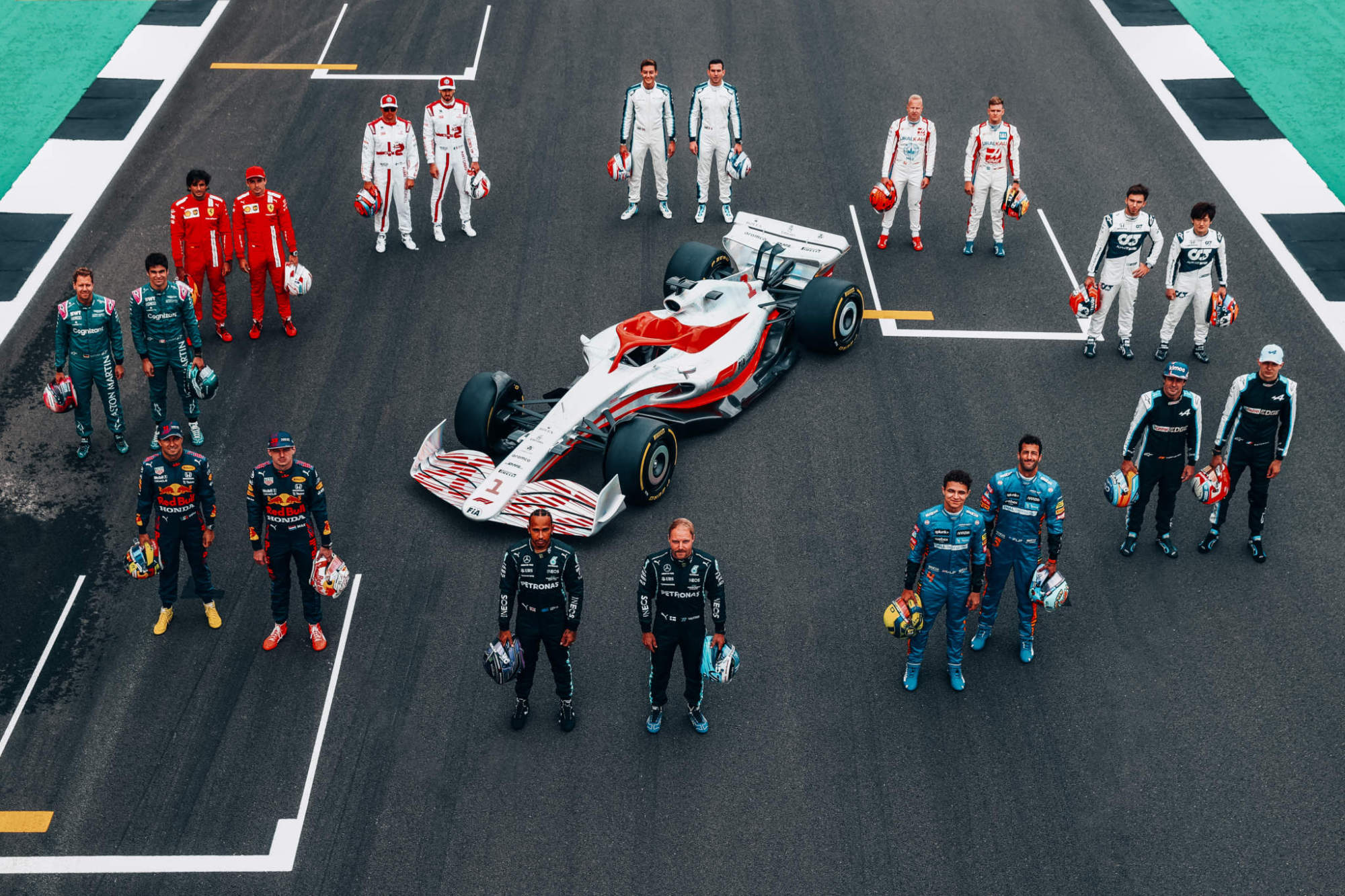
And these days of budget control, engine and gearbox limitations, we also have to factor in the risk to the cars. Norris’s accident in qualifying won’t have been a cheap repair job, so these days that has to also be taken into account.
There are no easy solutions to these problems and wet conditions always have, and always will, create problems for F1 cars. But that doesn’t mean that nothing can be done to improve the situation.
It’s worth doing because even if you only move the line by 10% in terms of how wet it is before you cannot run, that can make the difference between having a race and the farce we saw at Spa.








